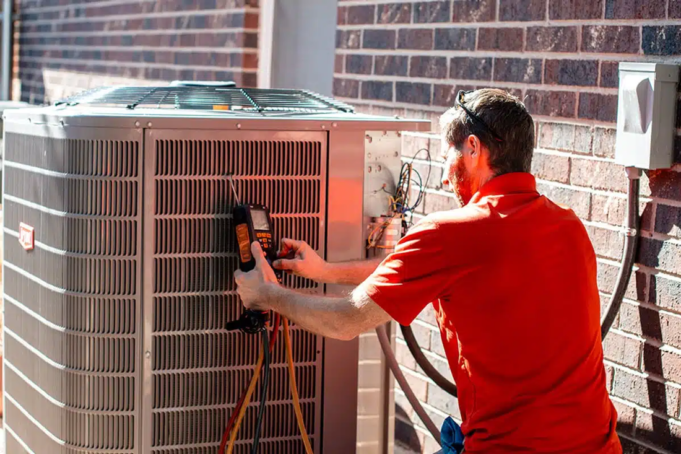As triple-digit heatwaves roll across Texas with increasing frequency, cities like Austin, Fort Worth, and Dallas are being pushed to their limits. What was once considered seasonal discomfort is now a full-scale infrastructure challenge. Air conditioning has become a lifeline — and when that lifeline breaks during peak hours or after dark, the differences in how cities respond come sharply into focus.
Texas may share the same grid and climate forecast, but when it comes to cooling access, emergency response, and long-term resilience, its major cities are following different paths — with mixed results.
Fort Worth, Dallas, and Austin: Three Cities, Three Cooling Realities
The heat may be statewide, but how Texas cities prepare for and respond to extreme temperatures reveals meaningful differences — and limitations — in both policy and practice.
Austin is often described as tech-forward, and while that holds true in certain respects, access to energy-smart infrastructure isn’t equally distributed. Some neighborhoods benefit from tools like smart thermostats, real-time grid feedback, and demand-based HVAC diagnostics — often supported by the city’s robust startup culture and sustainability policies. Yet during peak heat, especially in lower-income areas, access to these technologies remains uneven. Even with a reputation for innovation, the city faces the same vulnerabilities seen statewide, particularly among renters and seniors. Still, a more developed market for after-hours emergency AC repair services across Austin helps mitigate downtime when systems fail outside of business hours.
Fort Worth has made some important strides, including neighborhood energy audits, outreach through community organizations, and designated public cooling centers during heat emergencies. While these services do exist, their visibility and accessibility remain limited, especially during sudden heat waves when demand outpaces availability. The city’s older housing stock and variable infrastructure create uneven levels of resilience, especially in the absence of widespread retrofitting. While labeling its approach a “patchwork” might undersell some organized local efforts, many residents still rely heavily on informal support networks and short-term solutions during critical outages.
Dallas stands at a middle point. The city has promoted green building incentives and explored solar integrations in select municipal facilities. Updates to building codes have been initiated, but enforcement varies, particularly in older neighborhoods or areas experiencing rapid development. While newer construction benefits from energy-efficiency mandates, much of the city’s housing stock still lacks adequate insulation or grid flexibility. As a result, while Dallas may have more institutional capacity than Fort Worth, the on-the-ground impact of its sustainability policies is still maturing.
Together, the three cities show how infrastructure, policy focus, and economic inequality shape access to cooling in very different ways. Austin’s partial tech adoption, Dallas’s uneven modernization, and Fort Worth’s mixed public-private resilience efforts all offer insight into what’s working — and what gaps remain as Texas braces for hotter summers ahead.
What Staying Cool Actually Costs
The financial side of cooling is an equally important layer in this equation. While every city experiences the same soaring temperatures, not all residents can respond in the same way — particularly when systems break and replacements are needed.
In Austin, there’s more market momentum behind high-efficiency upgrades and multi-zone systems, particularly in higher-income neighborhoods. Even so, the financial divide persists. Renters and low-income residents often lack both the autonomy and resources to make needed improvements, even if better tech exists nearby.
In Fort Worth, many homes rely on older HVAC systems, which can struggle to keep up with prolonged heat. Upgrading isn’t always feasible.
In Dallas, newer developments may be equipped with higher-efficiency models, but older units remain common across much of the city. In both cases, the cost of replacement is a barrier. For most homeowners, typical costs for replacing a central air unit range from $2,500 to $4,500.
Those without the budget may turn to room-based solutions like window units, which cost significantly less — typically $150 to $800 — but may not be enough during widespread outages or multi-day heatwaves.
Social Pressure, Systemic Gaps
As climate pressure mounts, so does the urgency for consistent, equitable solutions — and that’s where gaps become most visible. In Fort Worth, cooling access still relies heavily on community organizations, family networks, and local nonprofits. These efforts are essential, but they can’t fully compensate for outdated infrastructure or limited policy support.
Dallas’s larger tax base and institutional infrastructure give it more options, but uneven implementation across neighborhoods still leaves many residents exposed. And in Austin, while innovation plays a key role in resilience, technology alone can’t bridge the equity divide without broader policy coordination.
These realities are compounded by economic shifts happening across all three cities. Each is experiencing population growth, housing demand, and rising energy use — all of which heighten the strain on power grids and HVAC systems. That dynamic is reflected in the recent regional job market surge, which adds more people to already-stretched systems — and not always in areas with the strongest infrastructure.
The Cooling Divide, and What Comes Next
Texas cities are learning that resilience is more than a buzzword — it’s a daily calculation. And while innovation, investment, and policy reform are slowly moving forward, the gaps between them still leave many residents sweating through a crisis that arrives earlier and lasts longer each year.
As Fort Worth, Dallas, and Austin continue to grow, their approaches to staying cool will need to evolve as quickly as the climate does — not just in headlines or pilot programs, but in the everyday experience of the people who call these cities home.
For more information, read about when AC systems fall behind here and alternative ways to beat the heat here.












